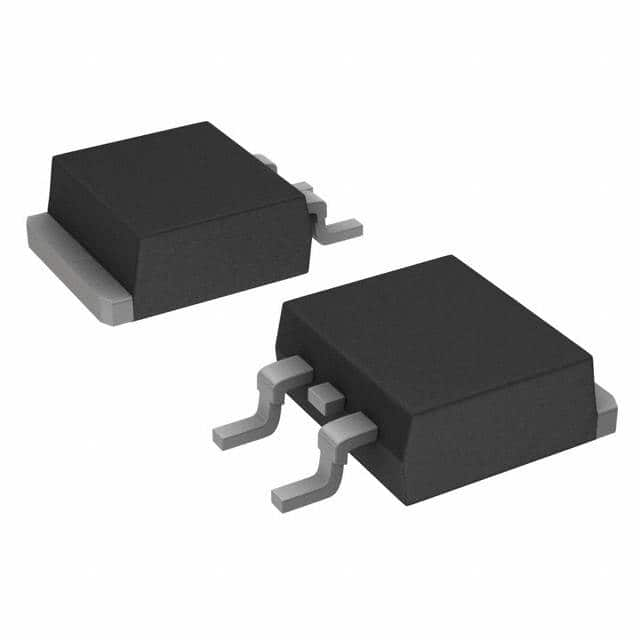IRF510S
Product Overview
The IRF510S belongs to the category of power MOSFETs and is commonly used in electronic circuits for switching and amplification applications. This component is known for its high input impedance, low power consumption, and fast switching speed. The IRF510S is typically packaged in a TO-220 package and is available in various quantities.
Basic Information
- Category: Power MOSFET
- Use: Switching and amplification in electronic circuits
- Characteristics: High input impedance, low power consumption, fast switching speed
- Package: TO-220
- Essence: Power MOSFET for efficient switching and amplification
- Packaging/Quantity: Available in various packaging options and quantities
Specifications
The IRF510S has the following specifications: - Drain-Source Voltage (VDS): 100V - Continuous Drain Current (ID): 5.6A - On-State Resistance (RDS(on)): 0.54Ω - Power Dissipation (PD): 43W - Operating Temperature Range: -55°C to 175°C
Detailed Pin Configuration
The IRF510S features a standard pin configuration with three pins: 1. Gate (G): Input terminal for controlling the MOSFET 2. Drain (D): Output terminal for the MOSFET 3. Source (S): Common terminal for the MOSFET
Functional Features
- High input impedance for minimal loading on driving circuits
- Low power consumption for energy-efficient operation
- Fast switching speed for rapid response in electronic circuits
Advantages and Disadvantages
Advantages
- Efficient switching and amplification capabilities
- Low power consumption
- Fast switching speed
Disadvantages
- Limited voltage and current handling compared to higher-power MOSFETs
- Higher on-state resistance compared to some alternative models
Working Principles
The IRF510S operates based on the principles of field-effect transistors, utilizing the control of an electric field to modulate the conductivity of the device. When a voltage is applied to the gate terminal, it controls the flow of current between the drain and source terminals, enabling switching and amplification functions in electronic circuits.
Detailed Application Field Plans
The IRF510S is commonly used in the following application fields: - Audio amplifiers - Switching power supplies - Motor control circuits - LED lighting systems - RF amplifiers
Detailed and Complete Alternative Models
Some alternative models to the IRF510S include: - IRF520 - IRF530 - IRF540 - IRF640
In summary, the IRF510S is a versatile power MOSFET suitable for various switching and amplification applications in electronic circuits. Its high input impedance, low power consumption, and fast switching speed make it a popular choice for designers and engineers seeking efficient performance in their designs.
Senaraikan 10 soalan dan jawapan biasa yang berkaitan dengan aplikasi IRF510S dalam penyelesaian teknikal
What is the maximum power dissipation of IRF510S?
- The maximum power dissipation of IRF510S is 43 watts.
What is the maximum drain current of IRF510S?
- The maximum drain current of IRF510S is 5.6 amperes.
What is the typical input capacitance of IRF510S?
- The typical input capacitance of IRF510S is 620 picofarads.
What is the typical gate charge of IRF510S?
- The typical gate charge of IRF510S is 22 nanocoulombs.
What is the voltage rating of IRF510S?
- The voltage rating of IRF510S is 100 volts.
Can IRF510S be used in audio amplifier circuits?
- Yes, IRF510S can be used in audio amplifier circuits due to its high power dissipation and current handling capabilities.
Is IRF510S suitable for switching applications?
- Yes, IRF510S is suitable for switching applications due to its low on-resistance and fast switching characteristics.
What are the typical applications of IRF510S?
- Typical applications of IRF510S include power amplifiers, motor control, LED drivers, and switching regulators.
Does IRF510S require a heat sink for high-power applications?
- Yes, for high-power applications, it is recommended to use a heat sink with IRF510S to dissipate heat effectively.
Can IRF510S be used in automotive electronic systems?
- Yes, IRF510S can be used in automotive electronic systems due to its ruggedness and ability to handle high currents and voltages.


